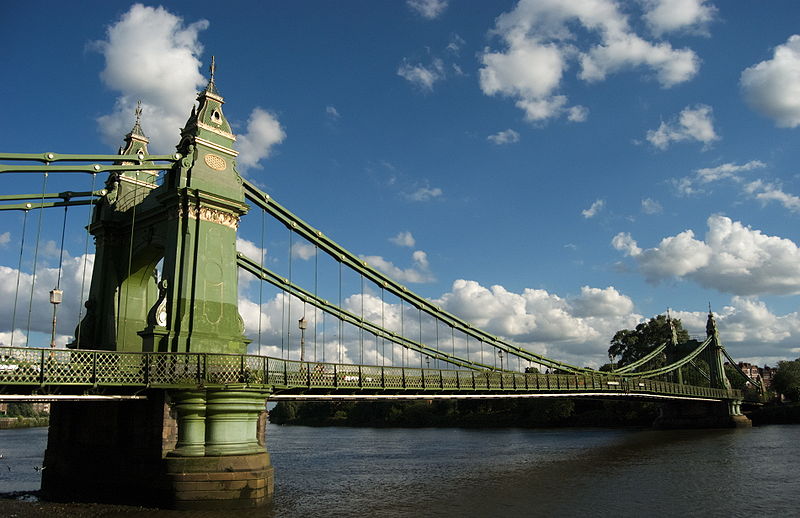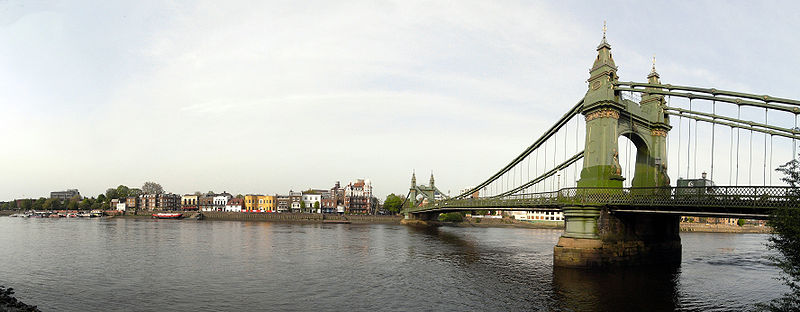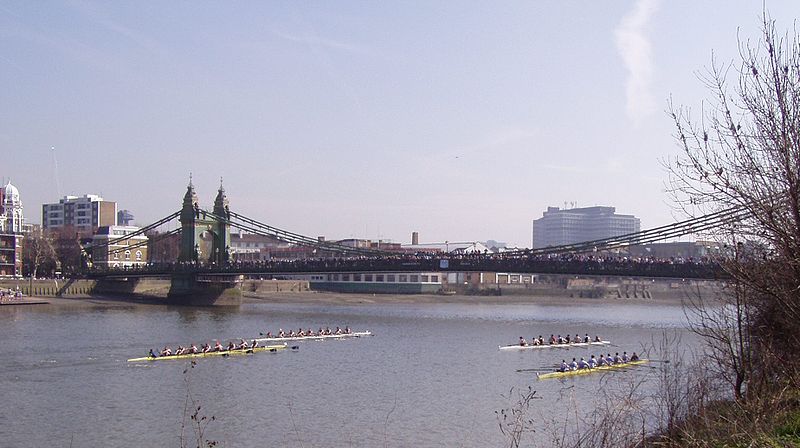| |||||||
Europe
North AmericaSouth AmericaAsiaAustralia and OceaniaAfrica |
Смотрите также: Hammersmith Bridge Hammersmith Bridge is a crossing of the River Thames in west London, just south of the Hammersmith town centre area of the London Borough of Hammersmith and Fulham on the north side of the river. It allows road traffic and pedestrians to cross to Barnes (in the London Borough of Richmond upon Thames) on the south side of the river. The current bridge is the second permanent bridge on the site.
Hammersmith Bridge Crosses River Thames Locale London, England Design Suspension bridge Total length 700 ft (210 m) Width 43 ft (13 m) Opening date 1887
Hammersmith Bridge has long suffered structural problems and has been closed for lengthy periods on several occasions, due to the weight and volume of road traffic now common in inner London, which the bridge was not originally designed to support. The bridge was refurbished in 1973 with replacement steel trusses, improvements to the mid-span hangers and new deck expansion joints. New deck timbers were installed and surfacing was changed from wooden blocks to coated plywood panels. These panels were subsequently replaced in 1987. In 1984 the Barnes-side tower bearings failed under a heavy load and had to be replaced.
In February 1997 the bridge was closed to all traffic except buses, bicycles, motorcycles, emergency vehicles and pedestrians to allow further essential repair works. Structural elements of the bridge had been found to be corroded or worn, in particular cross girders and deck surfacing, as well as some areas of masonry. The bridge re-opened in July 1998 to all road users, subject to a 7.5-long-ton (7.6 t) weight restriction and with a priority measure in place for buses. Local bus flow was controlled by traffic lights, and routes (such as the 72) were required to convert from double-decker buses to smaller single-deckers to reduce the load on the bridge. As part of the renovations following the 2000 IRA bombing (see below), the bridge received a complete new paint job restoring it to the original colour scheme of 1887, and new lighting was installed. The bridge was declared a Grade II* listed structure in 2008, providing protection to preserve its special character from unsympathetic development. Comments: 0 |
|
|||||









































